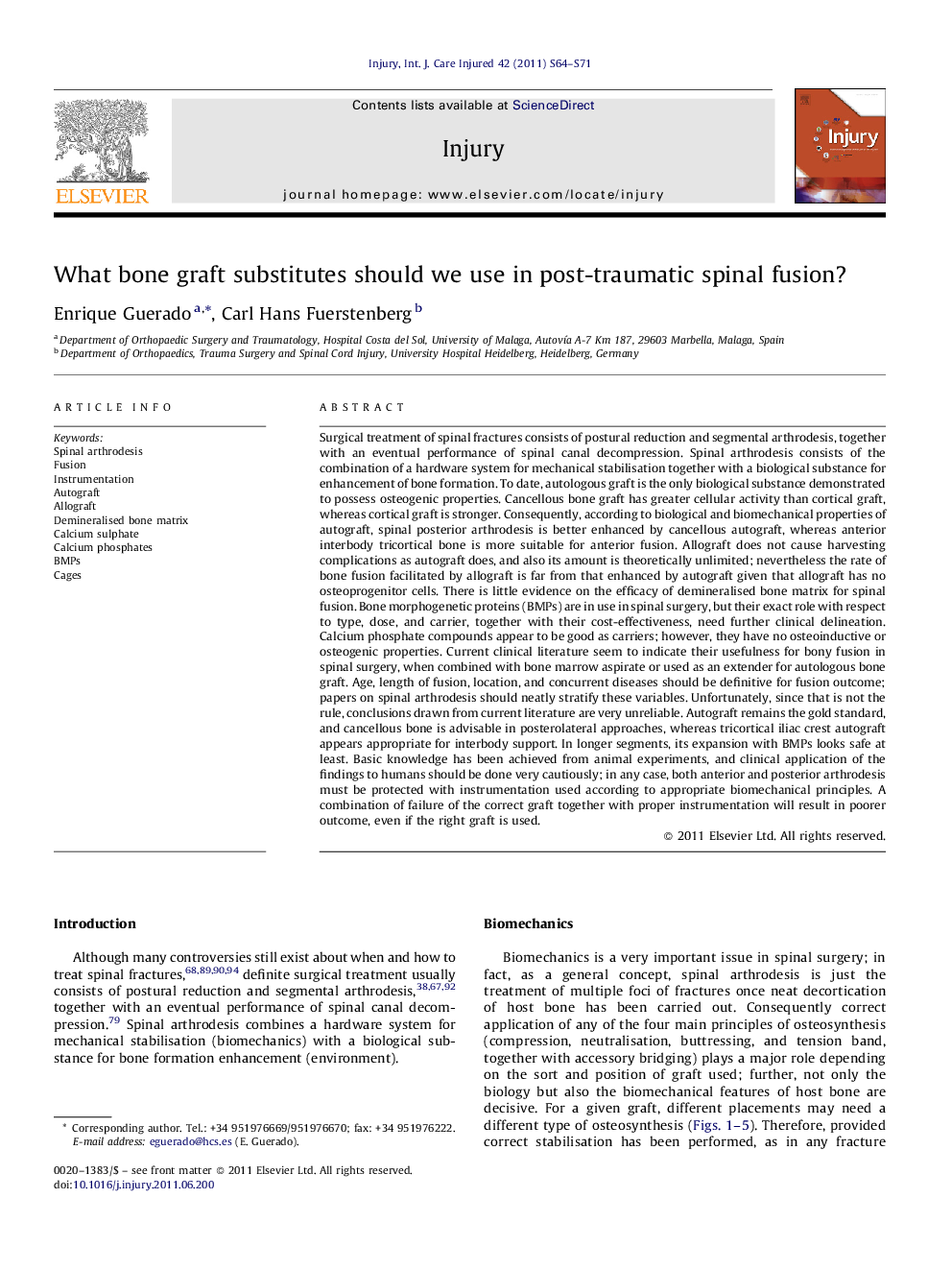| کد مقاله | کد نشریه | سال انتشار | مقاله انگلیسی | نسخه تمام متن |
|---|---|---|---|---|
| 6084363 | 1206051 | 2011 | 8 صفحه PDF | دانلود رایگان |

Surgical treatment of spinal fractures consists of postural reduction and segmental arthrodesis, together with an eventual performance of spinal canal decompression. Spinal arthrodesis consists of the combination of a hardware system for mechanical stabilisation together with a biological substance for enhancement of bone formation. To date, autologous graft is the only biological substance demonstrated to possess osteogenic properties. Cancellous bone graft has greater cellular activity than cortical graft, whereas cortical graft is stronger. Consequently, according to biological and biomechanical properties of autograft, spinal posterior arthrodesis is better enhanced by cancellous autograft, whereas anterior interbody tricortical bone is more suitable for anterior fusion. Allograft does not cause harvesting complications as autograft does, and also its amount is theoretically unlimited; nevertheless the rate of bone fusion facilitated by allograft is far from that enhanced by autograft given that allograft has no osteoprogenitor cells. There is little evidence on the efficacy of demineralised bone matrix for spinal fusion. Bone morphogenetic proteins (BMPs) are in use in spinal surgery, but their exact role with respect to type, dose, and carrier, together with their cost-effectiveness, need further clinical delineation. Calcium phosphate compounds appear to be good as carriers; however, they have no osteoinductive or osteogenic properties. Current clinical literature seem to indicate their usefulness for bony fusion in spinal surgery, when combined with bone marrow aspirate or used as an extender for autologous bone graft. Age, length of fusion, location, and concurrent diseases should be definitive for fusion outcome; papers on spinal arthrodesis should neatly stratify these variables. Unfortunately, since that is not the rule, conclusions drawn from current literature are very unreliable. Autograft remains the gold standard, and cancellous bone is advisable in posterolateral approaches, whereas tricortical iliac crest autograft appears appropriate for interbody support. In longer segments, its expansion with BMPs looks safe at least. Basic knowledge has been achieved from animal experiments, and clinical application of the findings to humans should be done very cautiously; in any case, both anterior and posterior arthrodesis must be protected with instrumentation used according to appropriate biomechanical principles. A combination of failure of the correct graft together with proper instrumentation will result in poorer outcome, even if the right graft is used.
Journal: Injury - Volume 42, Supplement 2, September 2011, Pages S64-S71